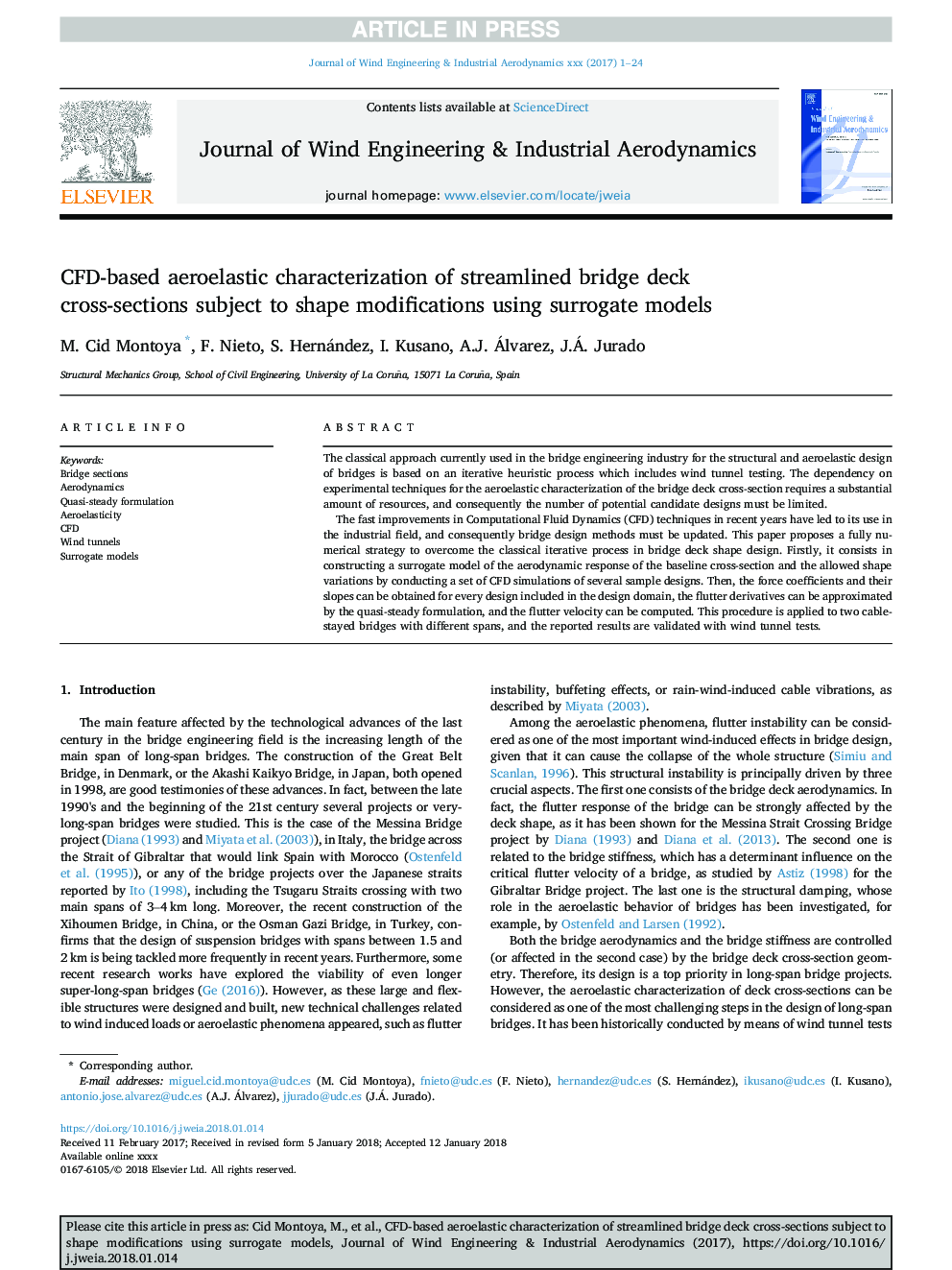| Article ID | Journal | Published Year | Pages | File Type |
|---|---|---|---|---|
| 6756926 | Journal of Wind Engineering and Industrial Aerodynamics | 2018 | 24 Pages |
Abstract
The fast improvements in Computational Fluid Dynamics (CFD) techniques in recent years have led to its use in the industrial field, and consequently bridge design methods must be updated. This paper proposes a fully numerical strategy to overcome the classical iterative process in bridge deck shape design. Firstly, it consists in constructing a surrogate model of the aerodynamic response of the baseline cross-section and the allowed shape variations by conducting a set of CFD simulations of several sample designs. Then, the force coefficients and their slopes can be obtained for every design included in the design domain, the flutter derivatives can be approximated by the quasi-steady formulation, and the flutter velocity can be computed. This procedure is applied to two cable-stayed bridges with different spans, and the reported results are validated with wind tunnel tests.
Related Topics
Physical Sciences and Engineering
Energy
Renewable Energy, Sustainability and the Environment
Authors
M. Cid Montoya, F. Nieto, S. Hernández, I. Kusano, A.J. Álvarez, J.Á. Jurado,
